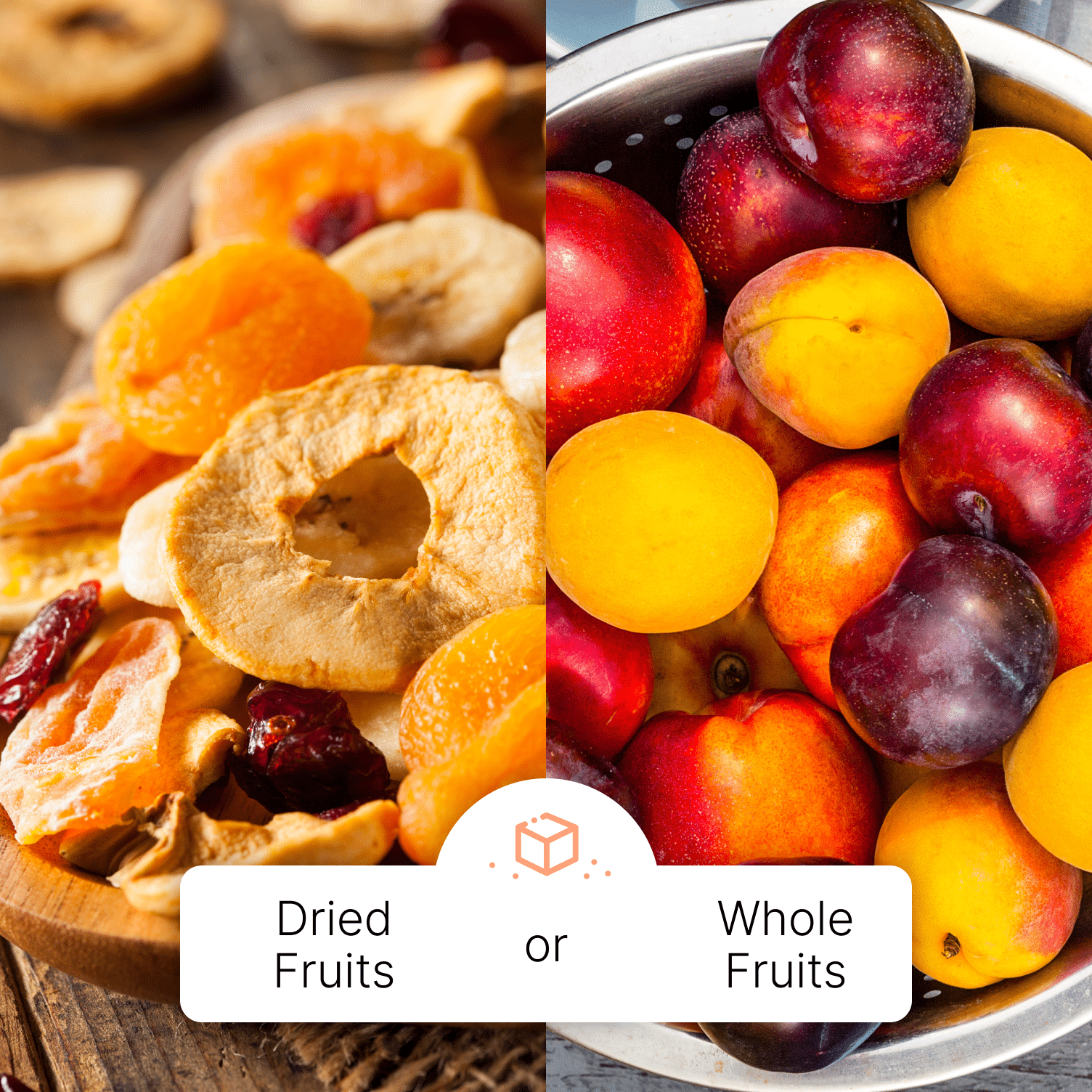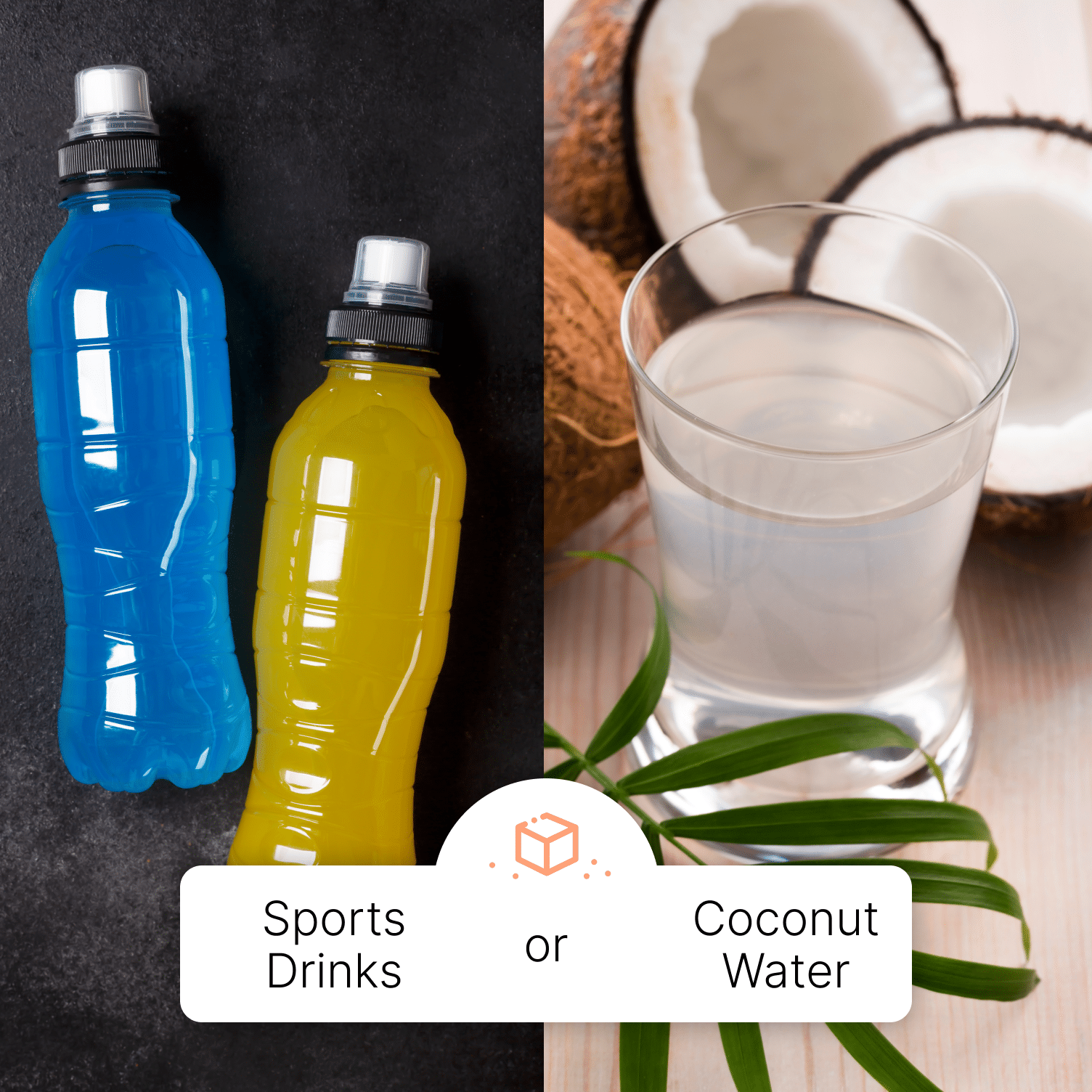February is Heart Health month! We’re celebrating all month long by highlighting sugar and its impacts on your health.
Did you know? Most adults, about 60% of men and 65% of women, consume more than their recommended limit for added sugars according to recent surveys. On top of that, according to the World Health Organization (WHO), we should aim for our daily intake of added sugar to be less than 5 percent of our total daily energy intake for improved heart health.
On average, that’s a recommended 25 grams or 6 teaspoons per day.
The good news is, we’re in this together! Reduce your sugar intake with these simple swaps from our Registered Dietitians.
HOW SUGAR IS LISTED ON LABELS
On any food label, you’ll see a section for sugars where it lists “total sugars” and “added sugars”. Total sugars include both added sugars and natural sugars (like the kind found in fruit). You won’t find natural sugars listed in the ingredients section on a food, but you will find all of the added sugars listed.
What are added sugars? According to the FDA, added sugars include “sugars that are added during the processing of foods (such as sucrose or dextrose), foods packaged as sweeteners (such as table sugar), sugars from syrups and honey, and sugars from concentrated fruit or vegetable juices. They do not include naturally occurring sugars that are found in milk, fruits, and vegetables. The Daily Value for added sugars is 50 grams per day based on a 2,000-calorie daily diet.”
Added sugar is the type you want to reduce in your diet because it doesn’t have any fiber, vitamins, or minerals alongside it the way natural sugars do.

Whole fruits! Both can have their benefits. Canned fruits are often blanched prior to canning and may be in syrup which can increase the sugar content quite a bit — up to 14g for a serving! Though sometimes cooking enhances their bioavailability and nutrient content.
If choosing canned fruit, select one that’s in 100% juice — this means it has used its own juice from that specific type of fruit. When looking at the label, you can quickly identify which has added sugar by looking for specific terms. Terms include light, heavy, or extra heavy syrup; lightly, heavily, or extra heavily sweetened fruit juice(s) and water; lightly, heavily, or extra heavily sweetened fruit juice(s).
RD Tip: Another thing to consider if you don’t have access to fresh fruit is frozen fruit. Very little to no nutritional value is lost during the freezing process. You can also simply freeze your fresh fruit before it expires. Bonus: this prevents food waste and saves you money!

People assume tonic water is a better mixer than soda, but how does its sugar content compare? A 12-ounce bottle of tonic water has 32g of added sugar, while ginger ale has 33g of added sugar. Depending on the brand, both tonic water and soda can have close to the same added sugar!
RD Tip: For a low added sugar mixer, try club soda and squeeze some fresh citrus juice like lime, lemon, or orange, or opt for diet soda.

A regular-sized candy bar (for reference, a Snickers bar) has 250 calories and 26g of added sugar. The typical energy bar has 250 calories and 15g of added sugar. Clif bar is a better choice than a candy bar as far as sugar goes, but it still has more than half of a woman’s recommended added sugar for the day, according to the AHA.
RD Tip: If you’re looking for a quick sweet-ish snack to take on the go, try a Kind Dark Chocolate and Sea Salt bar, which has 180 calories and only 4g of added sugar.

Smoothies found at the grocery store or at restaurants can be packed with added sugar. They can have up to 43g of added sugar — more than three times the amount found in a serving of vanilla ice cream!
Homemade smoothies are often better when it comes to sugar intake. That’s because when you make one at home, you have the power to reduce the added sugar by including ingredients that are naturally sweetened, like fruit, plain yogurt, or peanut butter. Plus, you can add a protein powder of your choice, and swap water for milk or juice.
RD Tip: If you purchase a smoothie, make sure to ask what it contains — sugar, honey, frozen yogurt, and concentrated juices add to the sugar content. While you’re there, you can ask for water instead of juice, or plain yogurt instead of flavored yogurt.

Boxed cereals often contain added sugar. Between the two, oats are the way to go! However, there are great traditional breakfast cereals with low to no added sugar.
RD Tip: Try some cereals like Nature’s Path Heritage Flakes, Post Grape-Nuts Cereal, Nature’s Path Organic Crunchy Vanilla Sunrise, and original Cheerios breakfast cereal from General Mills.

Dried fruits often contain a lot of added sugar. Some brands can have up to 23g of added sugar for 1 serving of dried fruit (1/4C). This is more than double the sugar in a typical glazed donut. Many brands provide no added sugar. To make sure you’re choosing one with low or no added sugar, read the ingredient list to make sure no sugars have been added.
It is important to choose a brand with no added sugar — dried fruits have most of the water removed, making the fruit itself smaller. This makes it easier to consume more than you would if the fruit were fresh — leading to a much higher sugar intake even if there is no sugar added.
RD Tip: Be aware of yogurt coating as it often adds even more added sugar. ALSO: another fun benefit of dried fruit with no added sugar? The drying process can double the amount of antioxidants in some fruits! So, dried fruit with no added sugar can have some huge health benefits!

If you’re in a high-intensity, long-distance competition, a sports drink can be useful as you likely need quick energy from the sugar. Otherwise, sports drinks typically are loaded with added sugar and are not beneficial. As an example, popular sports drinks often have 21g of added sugar in a 12 oz bottle — this equals over 5 tsp of sugar!
RD Tip: Coconut water is a great way to hydrate with electrolytes and typically contains very little to no added sugar. If you replace your weekly sports drink with coconut water (assuming no added sugar), you could be saving a little over one pound annually (4,368 calories). If you made this swap three times a week you would save 13,104 calories and almost 4 pounds per year!

Store-bought salad dressings often contain added sugar. Making your dressing at home allows you to be aware of what goes into it.
RD Tip: For a simple delicious dressing, try equal parts olive oil and vinegar, salt and pepper to taste, and green onions (optional); shake in a container to mix! If you prefer a store-bought dressing, try Yo Mama’s. The ingredient lists in these dressings are short and recognizable. A few contain some added sugar but most contain none or low amounts. Bragg’s contains 2-3g per serving of added sugar. Lastly, Chosen Foods also has a good selection with no added sugar.
Sugar is often added to increase the palatability or improve the taste of foods. Research has shown that sugar can activate specific reward pathways in the brain releasing neurotransmitters that may lead to feelings of happiness and pleasure. If sugar is consumed frequently enough, your brain can begin making a connection between sugar and the rewards you feel from it. Over time, this can lead to increased consumption — larger amounts of sugar are necessary to receive the same level of these rewards or feelings.
Surprised? Making your own swaps? Pledge to make one simple swap to reduce your sugar intake and post on social media along with the hashtag #MFPSugarSwap to help spread the word. You could also chat with other people taking the pledge in our community forum.
You can also check out the low-sugar meal plan from our Registered Dietitians.
Ready to take the next step? Unlock MyFitnessPal Premium to access custom goal settings, quick-log recipes, and guided plans from a registered dietitian. Premium users are 65% more likely to reach their weight loss goals!




